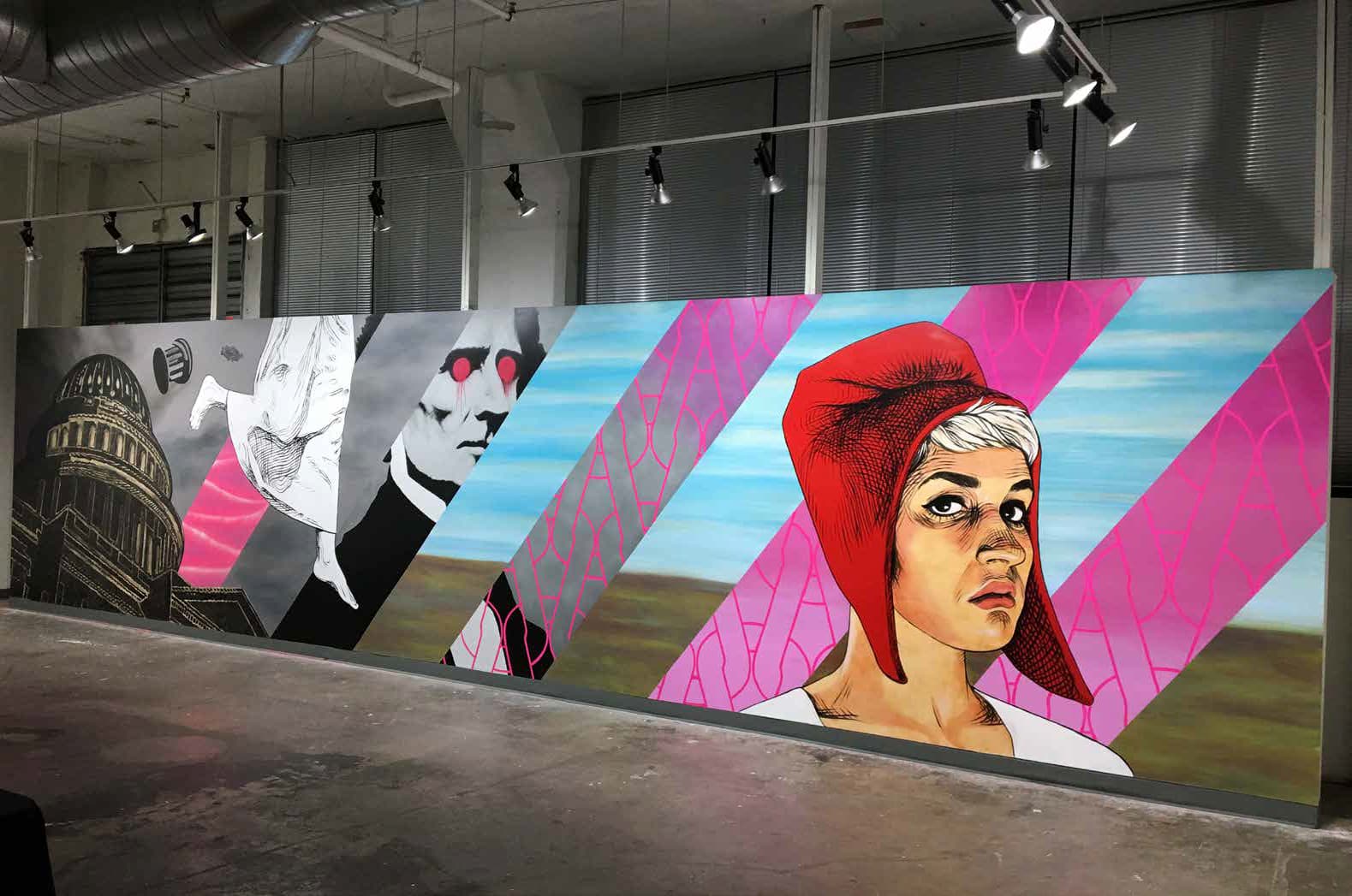Abstract
Operating from the position of an artist with a mature practice in creating public art, this essay chronicles and contextualises the development of a series of works that consider the history, symbolism, interpretation, and evolving understanding of specific historic public artworks. There is a paradox in my development as a muralist: my significant experience while being affiliated with and working on behalf of a prominent community-based non-profit arts organization, where I repeatedly faced constraints upon the content and attitude of the work being created, earned me the notoriety and reputation that facilitates for-profit work that critiques design-by-committee at best, and malignant censorship at worst. Works in the series deal with the intersections of gender and race in the content of public artworks in tones that range from reverent to harshly critical and – in some cases – suggestive of reparative action.
How to Cite
Published
Issue
Section
References
"Statue of Freedom," Architect of the Capitol, accessed June 2020, https://www.aoc.gov/art/other-statues/statue-freedom.
“Pussyhat' knitters join long tradition of crafty activism,” BBC News, accesed June 2020, https://www.bbc.com/news/world-us-canada-38666373.
Bures, Frank, "Richard Florida Can’t Let Go of His Creative Class Theory. His Reputation Depends On It." In Belt Magazine (13 December 2017), accesed June 20, https://beltmag.com/richard-florida-cant-let-go/.
Coutts, Marion, "From the Liberty Cap to the Pussy Hat: A History of Radical Objects.” In The Economist 1843 Magazine (17 October 2018), accessed June 2020, https://www.1843magazine.com/culture/look-closer/from-the-liberty-cap-to-the-pussy-hat-a-history-of-radical-objects.
Florida, Richard. Rise of the Creative Class. New York, NY: Basic Books, 2002.
Florida, Richard. The New Urban Crisis . New York, NY: Basic Books, 2017.
Homer Winslow, The Brush Harrow, 1865. Oil on canvas. 96.0 x 61.0 cm. Harvard Art Museums.
Hurley, Dan. “A Vision of Cincinnati: The Worker Murals of Winold Reiss.” In Queen City Heritage (Summer/Fall 1993): pp. 81–92.
Malanga, Steven. “The Curse of the Creative Class.” In City Journal (Winter 2004).
Robert Kraus, Victory , 1889.
Suarez, Harrod. “Midterm Evaluations, Swing State Aesthetics”. In American Quarterly 72, No. 1 (March 2020): pp. 207–220. DOI: https://doi.org/10.1353/aq.2020.0009
Sussman, Anna Louie. “Richard Florida on Why the Most Creative Cities Are the Most Unequal”. In Artsy (9 May 2017), accesed June 2020, https://www.artsy.net/article/artsy-editorial-creative-cities-unequal
Thomas Crawford, Statue of Freedom. 1863.


